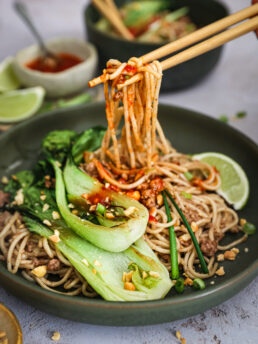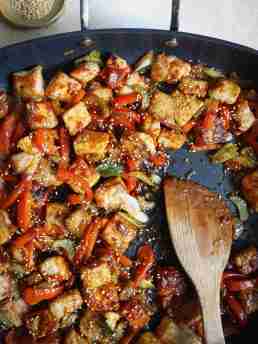Chinese Recipes
Chinese cuisine enjoys widespread popularity throughout the world. Its balance of flavors relies on thousands of years of uninterrupted tradition, and its staggering diversity reflects the vast regional diversity of China itself. But the food continues to evolve beyond history and geography into the 21st century.
What exactly makes Chinese food distinct? No matter what region you sample, you’ll likely encounter a balance of broad flavors. Sweet, sour, salty, spicy—new and fantastic combinations await you in Chinese cuisine.
The dishes typically harmonize this over carbohydrates, like rice or noodles, that provide the perfect textural homogeneity.
Regional Variety
But with a country so large and with a cultural legacy spanning multiple millennia, there are bound to be significant regional styles. And China, more than perhaps any other country, has regional variety in its cuisine.
The most famous Chinese cooking regions are:
- Cantonese (Guangdong): This region focuses on fresh ingredients and roast meats. Their flavors take center stage, so they are often dressed with fairly light seasonings—think soy sauce, rice wine, ginger, or garlic. Its most famous dish is probably Dim sum.
- Sichuan: The so-called “numbing” heat of Sichuan peppercorns and chili peppers defines this region. That spiciness is layered in with other flavors, often alongside techniques like dry-frying, steaming, and braising. Mapo tofu and hot pot are signature dishes.
- Hunan: Rather than numbing, Hunan goes right for extreme heat and sour flavor. Here, the cooking techniques lend themselves to more hearty and rustic meals—with stewing and smoking very popular. This region gives us braised pork and stir-fried meats.
- Shandong: The umami flavor plays a key role in Shandong. Soy sauce and seafood provide these dishes with mouth-watering savoriness, and its northern homeland means more wheat. Think sweet and sour carp or braised sea cucumber.
How to Make Chinese Food
As a food culture, Chinese food relies heavily on stir-frying. This cooks ingredients rapidly without greatly changing their texture, which also ends up preserving a lot of the local character that comes from the fresh ingredients.
To add in flavor that slower cooking methods often deliver, Chinese cuisine often makes use of rich sauces and fermented ingredients to add depth.
And as we touched on earlier, the protein and fresh vegetables are frequently placed on a bed of carbohydrate, like rice or noodles.
These techniques and methods give us some of the most globally recognizable dishes like Peking duck and mapo tofu.
Elevating the cuisine a bit further, you’ll find many chefs who have also mastered the art of presentation.
By traveling through the regions of Chinese cooking, we can see how these dishes tell a gastronomic story. The variation in flavor profiles and ingredients gives local flare, yet they all retain delicate balancing and the same overall idea of what makes a meal satisfy us on every level. As we eat these delicious meals, we explore what is perhaps the grandest culinary tradition in all the world.


